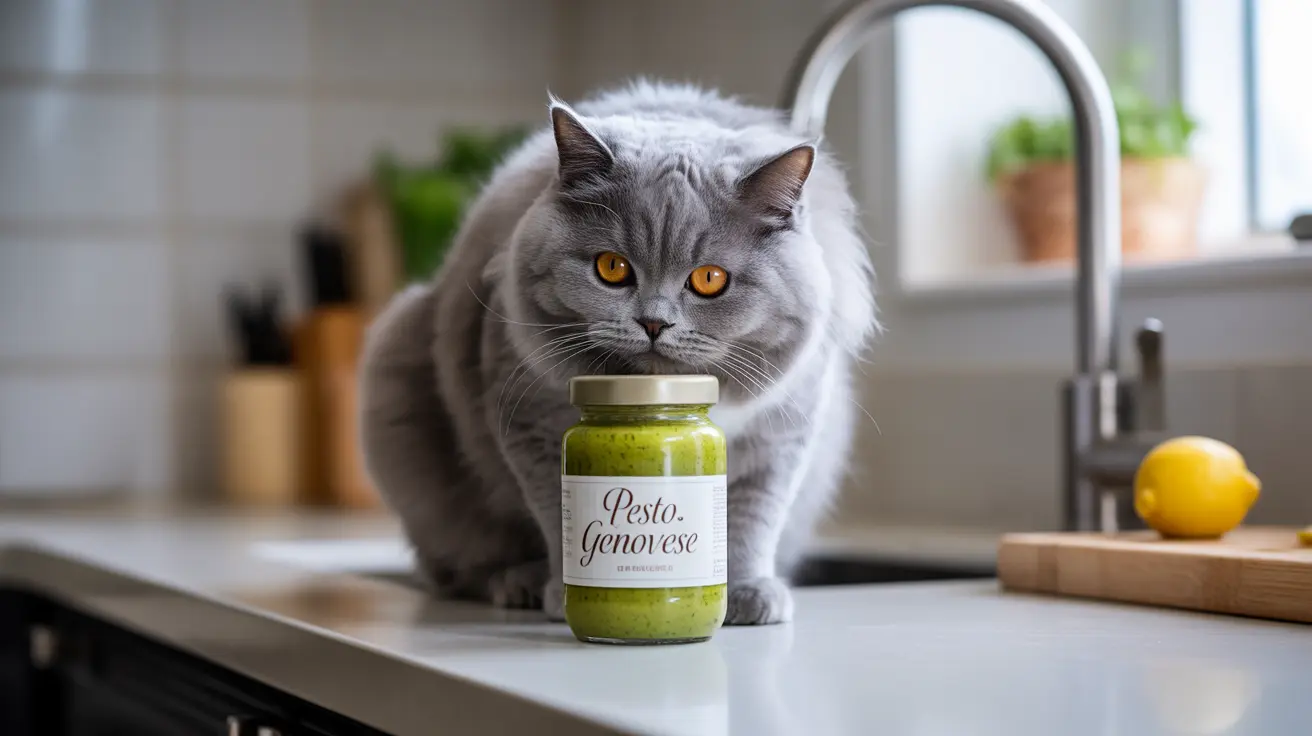As cat owners, we often wonder about sharing our favorite foods with our feline friends. Pesto, the aromatic Italian sauce made with basil, garlic, cheese, pine nuts, and olive oil, might seem tempting to share. However, this popular condiment poses significant health risks to cats.
In this comprehensive guide, we'll explore why pesto is dangerous for cats, examine its harmful ingredients, and learn what to do if your cat accidentally consumes this sauce.
The Dangers of Pesto for Cats
Pesto contains several ingredients that are toxic or harmful to cats. Understanding these components is crucial for protecting your feline's health.
Toxic Ingredients in Pesto
The most dangerous ingredients in pesto include:
- Garlic: Highly toxic to cats, causing anemia and damage to red blood cells
- Pine nuts: Can cause digestive issues and pancreatitis due to high fat content
- Salt: Commercial pestos contain dangerous levels of sodium for cats
- Cheese: Most cats are lactose intolerant, leading to digestive problems
Why Garlic is Particularly Dangerous
Garlic, a key ingredient in pesto, contains compounds that can severely damage cats' red blood cells. Even small amounts can lead to potentially life-threatening anemia. Symptoms may take several days to appear, making it particularly dangerous.
Health Risks and Symptoms
If your cat consumes pesto, they might experience various symptoms, including:
- Vomiting and diarrhea
- Weakness and lethargy
- Pale gums
- Rapid breathing or heart rate
- Loss of appetite
- Blood in urine
What to Do If Your Cat Eats Pesto
If you suspect your cat has consumed pesto, take these immediate steps:
- Monitor your cat closely for symptoms
- Contact your veterinarian immediately
- Save the pesto container or recipe for ingredient information
- Do not induce vomiting unless instructed by a veterinarian
Safe Alternatives for Cats
Instead of sharing human foods like pesto, stick to:
- Commercial cat food appropriate for your cat's age and health needs
- Veterinarian-approved treats
- Fresh, clean water
Frequently Asked Questions
Can cats safely eat pesto or any of its ingredients like garlic and pine nuts?
No, cats cannot safely eat pesto or many of its ingredients. Garlic is highly toxic to cats, while pine nuts can cause digestive issues and pancreatitis. Other ingredients like salt and cheese can also cause health problems.
What are the signs my cat might be sick after eating pesto?
Signs include vomiting, diarrhea, weakness, lethargy, pale gums, rapid breathing, loss of appetite, and blood in urine. These symptoms may take several days to appear, especially in cases of garlic toxicity.
Why is garlic in pesto toxic to cats even in small amounts?
Garlic contains compounds that damage cats' red blood cells, potentially causing life-threatening anemia. Cats are extremely sensitive to these compounds, making even tiny amounts dangerous.
Is it dangerous if my cat licks pesto accidentally?
While a single small lick might not cause immediate severe problems, it's best to monitor your cat for symptoms and contact your veterinarian for guidance, as even small amounts of garlic can be harmful.
What should I do if my cat ingests pesto or pesto-containing foods?
Contact your veterinarian immediately, monitor your cat for symptoms, and save the pesto container or recipe for reference. Don't wait for symptoms to appear before seeking medical advice.
Conclusion
While pesto is a delicious condiment for humans, it's absolutely unsafe for cats. The combination of toxic ingredients, particularly garlic, makes it potentially dangerous even in small amounts. Always keep pesto and other human foods away from your feline companions, and stick to veterinarian-approved cat food and treats for their safety and well-being.






